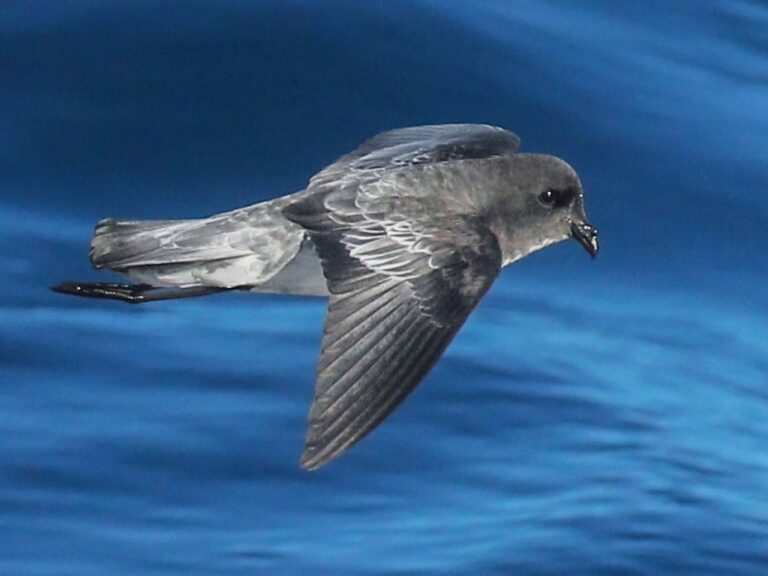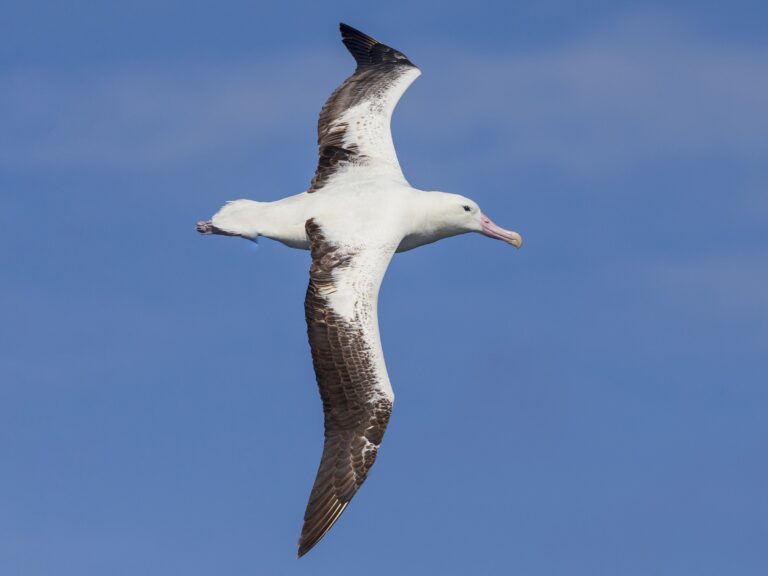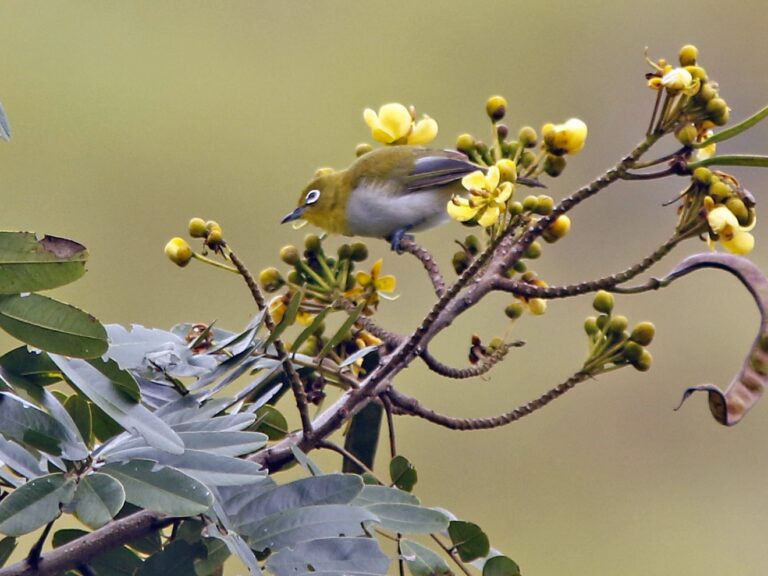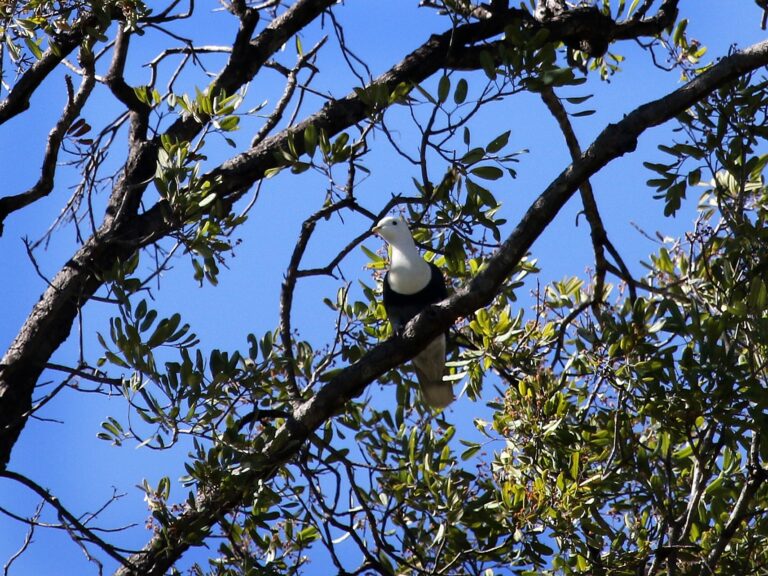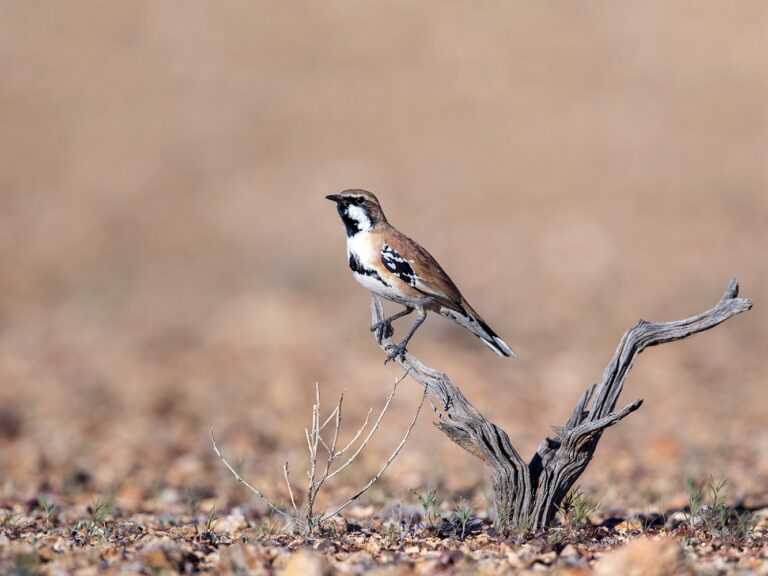Golden Bowerbird: A Fascinating Study of Courtship and Nesting Behavior
The Golden Bowerbird, known scientifically as Prionodura newtoniana, is a remarkable Australasian bird native to Queensland, Australia.
This species is famous for its unique courtship behavior, where males create elaborate structures called bowers to attract females.
These structures are decorated with colorful objects, showcasing the male’s creativity and ability to gather visually appealing items from their environment.
With a striking appearance and intriguing habits, the Golden Bowerbird captures the attention of birdwatchers and researchers alike.
Its habitat mainly consists of tropical rainforests, where it thrives in the lush greenery. Unfortunately, this gorgeous bird faces threats from habitat loss, making conservation efforts vital to ensuring its survival.
Exploring the world of the Golden Bowerbird reveals fascinating insights into its behavior, ecology, and the challenges it faces. This blog post will take readers on a journey through its life, shedding light on what makes this bird so special.
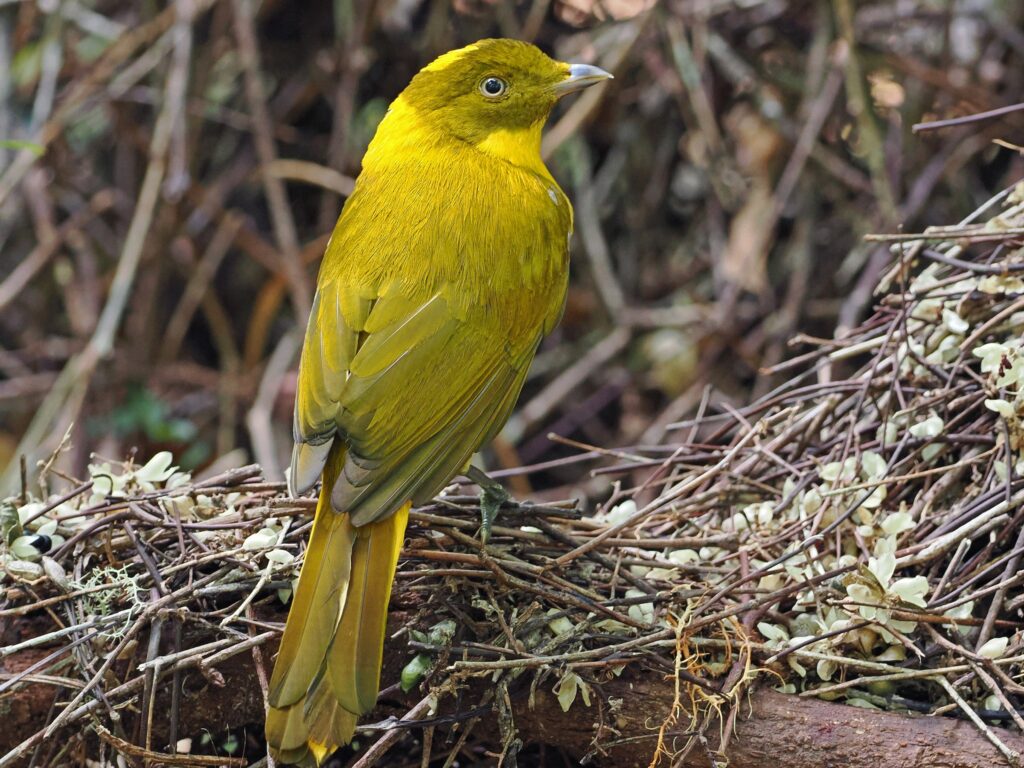
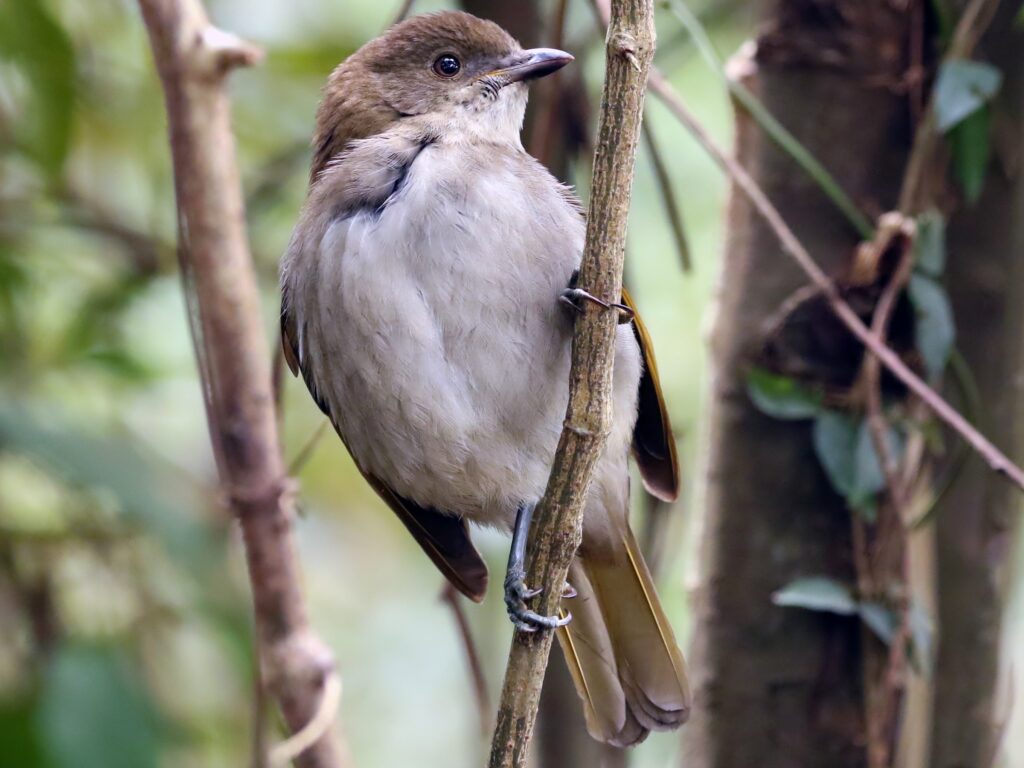
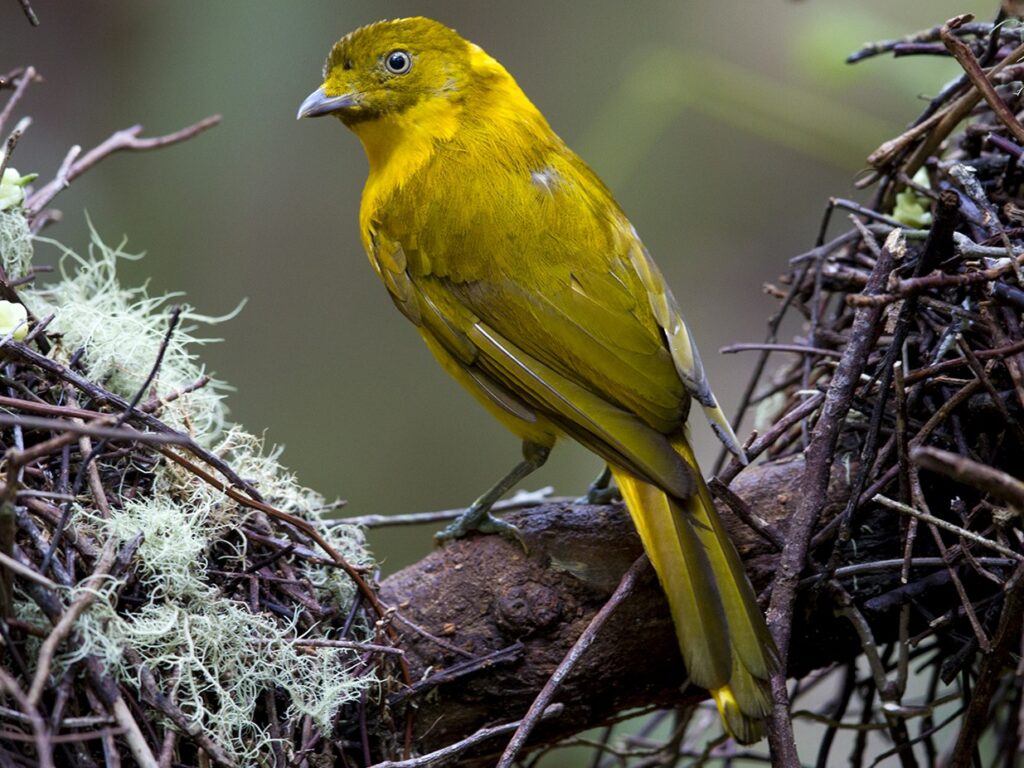
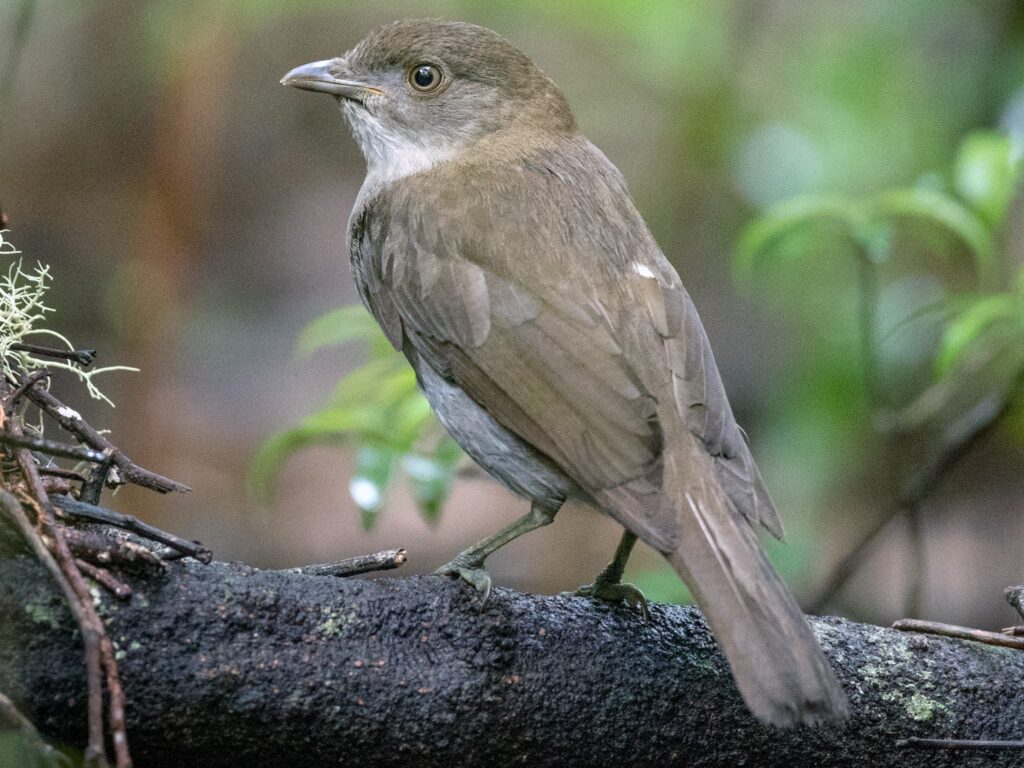
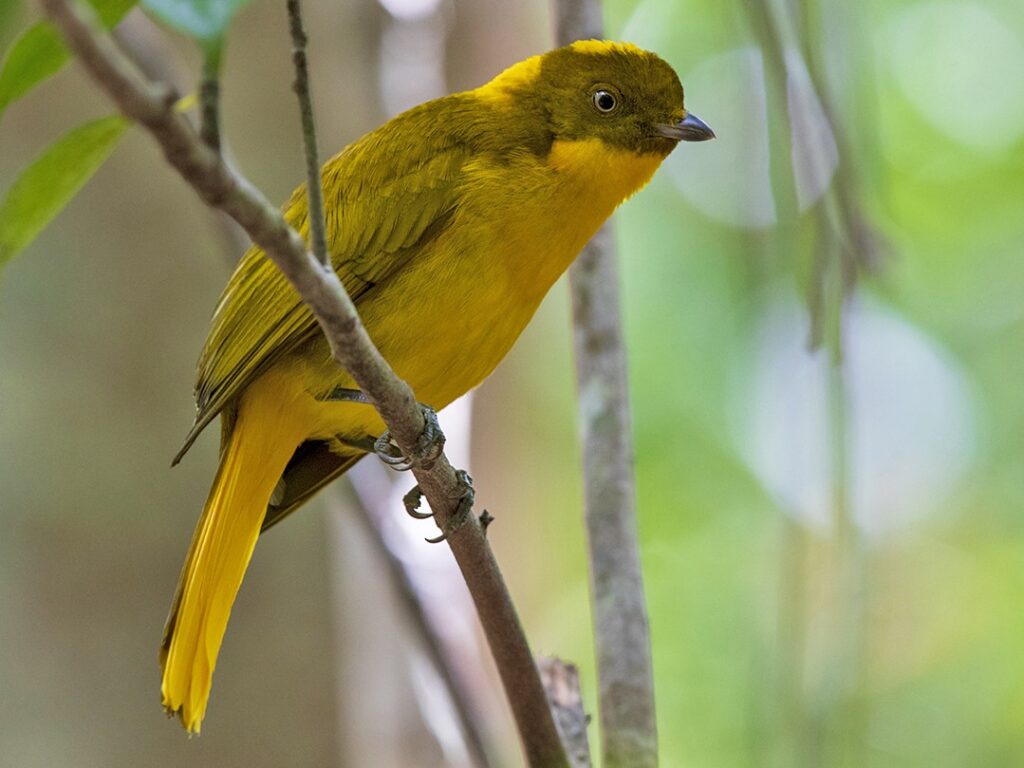
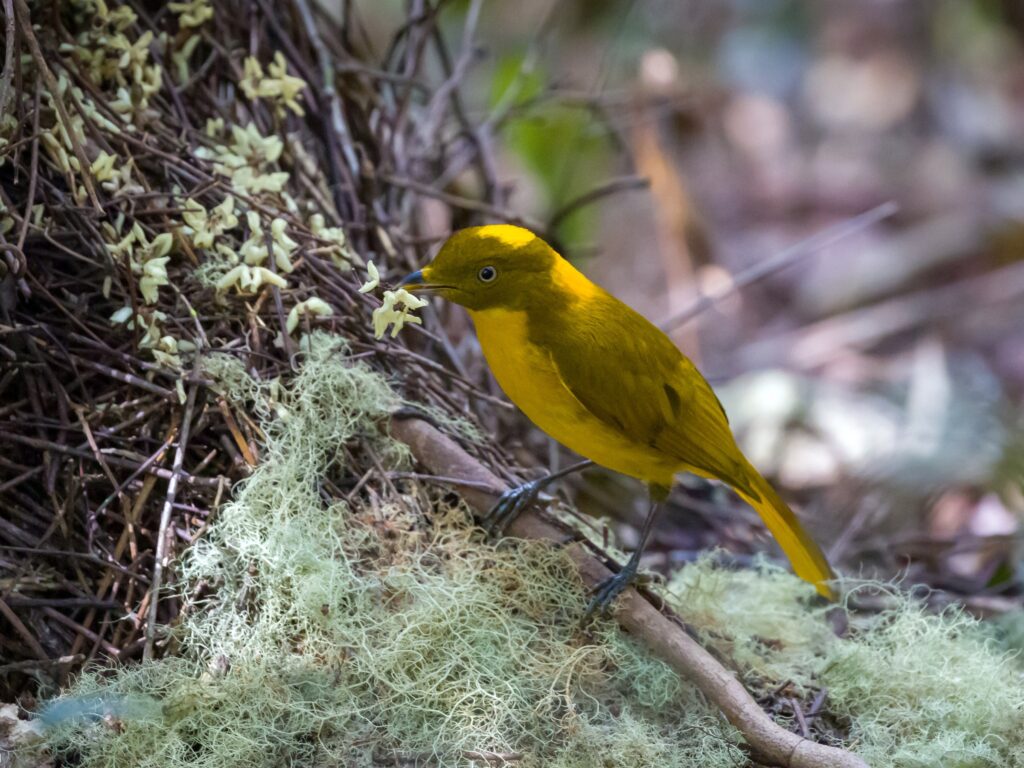
Key Takeaways
- The Golden Bowerbird is known for its unique courtship display and elaborate bowers.
- This species is primarily found in Queensland, Australia, where it inhabits tropical rainforests.
- Conservation efforts are crucial due to habitat loss threatening the Golden Bowerbird’s future.
Taxonomy and Classification
The classification of the Golden Bowerbird is crucial for understanding its biology and ecology. It provides insights into its relationships with other species and its role in the avian family tree.
Scientific Nomenclature
The Golden Bowerbird is scientifically named Prionodura newtoniana. This name reflects the bird’s specific characteristics and its place within the animal kingdom.
The genus Prionodura is used for this species, which is recognized for its unique courtship behavior and nesting practices.
It also highlights the bird’s adaptation to its environment in tropical highlands. The use of such nomenclature contributes to the precise identification of the species, aiding in research and conservation efforts.
Family and Order
The Golden Bowerbird belongs to the family Ptilonorhynchidae and the order Passeriformes.
The family Ptilonorhynchidae, known as bowerbirds, includes species noted for their elaborate mating displays. These birds construct intricate structures called bowers to attract mates.
In the order Passeriformes, which encompasses over half of all bird species, the Golden Bowerbird shares important traits with both passerines and other bowerbirds. Its classification highlights evolutionary relationships and ecological roles within diverse habitats.
Physical Characteristics
The Golden Bowerbird, scientifically known as Prionodura newtoniana, exhibits distinct physical traits that set it apart from other bird species. This section highlights the specific characteristics of male plumage and their overall size and morphology.
Male Plumage
The male Golden Bowerbird is renowned for its striking and vibrant plumage. Its feathers are primarily bright yellow, which can appear almost golden in certain lights. This bold coloration plays a crucial role in attracting potential mates.
Males also feature a distinctive black mask around their eyes and a rich chestnut color on their wings and back. These contrasting colors enhance their visual appeal.
During courtship displays, males may exhibit their plumage by spreading their wings and performing around their elaborate bowers, which they decorate to impress females.
Size and Morphology
The Golden Bowerbird measures about 22 to 26 centimeters in length. Males are slightly larger than females, showcasing sexual dimorphism in size. Their bodies are slender, allowing for agile movements through the forest canopy.
These birds have a strong, pointed bill that aids in foraging for fruits and insects. Their legs are short yet sturdy, supporting their agile climbing ability. The combination of size and morphology contributes to their ability to thrive in their tropical rainforest habitat.
Habitat and Distribution
The Golden Bowerbird thrives in specific environments, primarily found in high-elevation rainforests. This section explores its preferred habitats and geographical range, highlighting key regions where these birds flourish.
Rainforest Habitats
The Golden Bowerbird is mainly restricted to higher-elevation rainforest environments in Northern Queensland, particularly within the Paluma Range National Park. These rainforests provide dense foliage and abundant food sources, crucial for the bird’s survival.
Males are known for their impressive bower-building skills, constructing large towers of sticks decorated with various objects like flowers and lichen. These structures serve as mating displays and are often reused for multiple nesting seasons.
The lush surroundings of the rainforest support their nesting and feeding activities, making it an ideal habitat.
Geographical Range
The geographical range of the Golden Bowerbird is limited but significant. It is found solely in Northern Queensland, Australia, where it inhabits elevated mountainous areas.
This bird prefers regions with specific climatic conditions that support its rainforest habitat. As they are sensitive to climate change, shifts in temperature and habitat loss due to deforestation can significantly affect their distribution.
The loss of suitable habitats may lead to a decline in their populations, making conservation efforts vital for their survival.
Behavior and Ecology
The behavior and ecology of the Golden Bowerbird are deeply connected to its mating displays, foraging habits, and territoriality. Understanding these aspects reveals the bird’s unique adaptations and social structure in its rainforest habitat.
Mating Displays
Golden Bowerbirds are known for their elaborate courtship rituals. Males construct intricate structures called bowers, using natural materials such as sticks, flowers, and lichens.
These bowers are not nests but rather stages for attracting females. Males enhance their displays by decorating with colorful objects like berries and shiny items.
Their vibrant plumage and complex songs also contribute to attracting a mate. Each male’s bower reflects his individual style, showcasing his fitness and creativity. This competition is crucial for reproductive success.
Diet and Foraging
Golden Bowerbirds primarily feed on fruits, nectar, and insects found in the rainforest. They are especially fond of various flowers that provide nectar.
Their sharp beaks allow them to extract nectar from deep-throated flowers, while their foraging skills help them locate insects hidden within foliage.
Lichens also form an essential part of their diet, especially during seasons when fruits are less abundant. This varied diet supports their energy needs for elaborate mating displays.
Territoriality
Males establish and defend territories around their bowers. These territories are vital for attracting females and securing breeding rights.
Territorial disputes can arise, where males engage in displays and vocalizations to assert dominance. The size and quality of a male’s territory often influence its attractiveness to females.
Maintaining a territory in the dense rainforest can be challenging, as it requires access to food sources and potential mates. This behavior ensures the best males pass on their genes to the next generation.
Conservation Status
The conservation status of the Golden Bowerbird is a topic of interest due to its unique habitat requirements and the threats it faces. Understanding these elements is essential for effective conservation actions.
Threats to Survival
The Golden Bowerbird faces several serious threats that can impact its population. One major concern is habitat loss, as this bird relies on specific tropical highland habitats that are being affected by climate change and deforestation.
Additionally, changes in land use for agriculture and urban development further reduce suitable living spaces. As their habitats fragment, the bowerbirds may struggle to find mates and food.
While the species is currently listed as Least Concern, its specific habitat needs make it vulnerable to future declines. Continued monitoring is necessary to ensure the bird does not move closer to extinction.
Protection Efforts
Efforts are underway to protect the Golden Bowerbird and its habitat. Conservation organizations are working to preserve the tropical highland ecosystems crucial for their survival.
Protected areas have been established in regions where these birds are found. These areas help safeguard their nesting and foraging environments from development and logging activities.
Education and awareness campaigns also play a significant role. They focus on informing local communities about the importance of conserving these unique birds and their habitats.
By combining habitat protection with community engagement, there is a better chance of ensuring the long-term survival of the Golden Bowerbird.
Cultural and Human Interactions
The Golden Bowerbird has significant roles in both Indigenous cultures and modern human activities. These interactions showcase the bird’s impact on local traditions and economies, especially in Queensland, where it resides.
In Indigenous Culture
In Indigenous Australian cultures, the Golden Bowerbird holds a special place. They are often regarded as symbols of beauty and creativity.
The intricate bowers built by male bowerbirds are seen as representations of courtship and attraction, which align with many Indigenous beliefs about nature and relationships.
This species inspires stories and artwork, reflecting the connection between humans and wildlife. Additionally, some Indigenous groups use the birds in educational contexts, teaching younger generations about biodiversity and local ecosystems. Understanding the significance of the Golden Bowerbird deepens respect for nature within these cultures.
Birdwatching Tourism
Birdwatching tourism is a growing industry in Queensland, boosted by the presence of the Golden Bowerbird. Tourists flock to see these striking birds in their natural habitats, driving local economies.
Guided tours often highlight the unique behaviors of bowerbirds and their elaborate nesting tactics.
Local operators may offer packages that include birdwatching expeditions, giving visitors the chance to learn more about these birds. The appeal of the Golden Bowerbird adds to the allure of exploring Australia’s rich avian diversity.
This tourism is often marketed as both royalty-free and appealing to those seeking memorable wildlife experiences.
Media and Art
The Golden Bowerbird has also inspired various forms of media and art.
Photographers and filmmakers capture its vibrant colors and unique behaviors, creating content that promotes wildlife conservation.
Many artists incorporate the bowerbird into their works, celebrating its beauty and role in nature.
This artistic representation helps raise awareness about environmental issues and the importance of preserving habitats.
Rights-managed images of the Golden Bowerbird are often used in publications, documentaries, and educational materials, reinforcing its cultural significance and ecological importance.
Frequently Asked Questions
The Golden Bowerbird possesses several fascinating traits and behaviors that set it apart.
This section explores its unique habits, habitat, diet, mating displays, song characteristics, and bower structures.
What are the distinguishing behaviors of the Golden Bowerbird?
The Golden Bowerbird is known for its intricate courtship rituals.
Males construct elaborate bowers to attract females. These bowers are decorated with various objects, often in shades of blue and yellow, showcasing the male’s creativity and fitness.
Where can Golden Bowerbirds be typically found in their natural habitat?
Golden Bowerbirds are native to the rainforests of New Guinea and nearby islands.
They prefer dense, humid environments where they can easily find food and build their bowers. Their habitat usually includes tall trees and abundant foliage.
What dietary habits are characteristic of the Golden Bowerbird?
Golden Bowerbirds primarily feed on fruits, insects, and small invertebrates. They have a particular fondness for figs and can often be seen foraging in trees.
Their diet varies with seasonal availability of food sources in their habitat.
How does the mating display of the Golden Bowerbird differ from other bowerbirds?
During mating displays, males perform a series of dances and calls to impress females.
Unlike some other bowerbirds, the Golden Bowerbird’s display emphasizes visual attraction through the bower’s decoration and the male’s vibrant plumage.
What are some unique characteristics of the Golden Bowerbird’s song?
The song of the Golden Bowerbird is a blend of melodious notes and complex sounds.
Males have a repertoire of calls that they use to communicate with each other and attract mates. Their songs vary from rhythmic patterns to mimicry of other bird species.
How do the bower structures of Golden Bowerbirds compare to those of other bowerbird species?
The bowers built by Golden Bowerbirds are typically more elaborate than those of many other species. They often incorporate bright, colorful objects and show a high degree of organization.
This attention to detail makes their bowers stand out within the bowerbird family.


